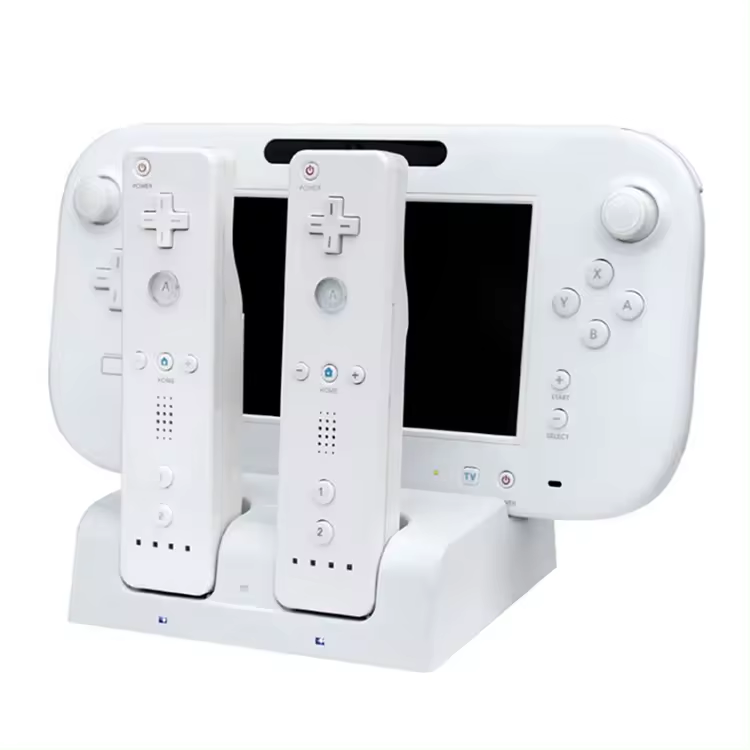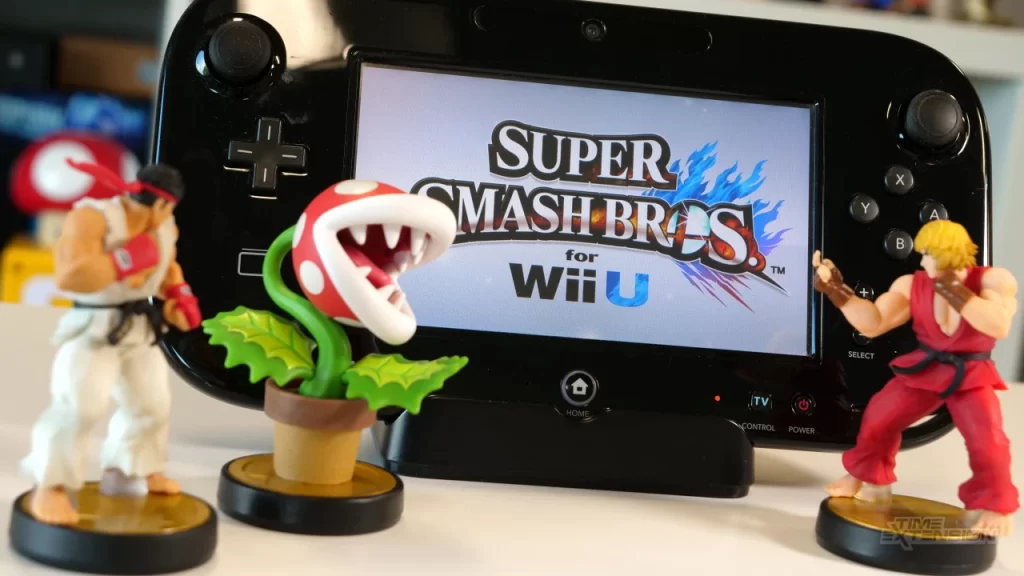The Wii U GamePad, a key component of the Wii U console experience, relies on a rechargeable battery. However, encountering issues where the gamepad refuses to charge can be frustrating. Fear not, Wii U enthusiast! This guide will delve into the potential causes behind a non-charging gamepad and equip you with troubleshooting steps to get your gamepad back in action.

Common Culprits: A Step-by-Step Approach
-
The AC Adapter: This is the most common culprit. Begin by checking the AC adapter itself for any visible damage to the cord or the power brick. Ensure the connection between the adapter and the gamepad is secure. Try a different power outlet to eliminate the possibility of a faulty wall socket. Finally, unplug the adapter from both the console and the wall outlet for 30 seconds to a minute. This allows the adapter to reset. Plug it back in and see if the charging light illuminates on the gamepad.
-
Dirty Charging Port: Dust, debris, or corrosion can accumulate within the gamepad’s charging port, hindering a proper connection. Grab a can of compressed air and carefully blow out any dust or debris from the port. If you suspect corrosion, a soft toothbrush can be used to gently clean the port, but avoid using any liquids or harsh chemicals.
-
Faulty Battery: Over time, batteries naturally lose their ability to hold a charge effectively. If the above steps yield no results, a worn-out battery might be the issue. Replacing the battery with a new, compatible one should resolve the charging problem.

Beyond the Basics: Additional Considerations
-
Software Issues: In rare instances, outdated console software can cause glitches that affect charging functionality. Check if there are any available system updates for your Wii U console. Downloading and installing the latest update might address the issue.
-
Physical Damage: If your gamepad has suffered a fall or sustained any physical damage, the internal components responsible for charging might be compromised. In such cases, seeking professional repair services may be necessary.

Replacement Options: Batteries and Beyond
If replacing the battery becomes necessary, ensure you acquire a new one specifically designed for the Wii U GamePad model you own. Several reputable online retailers and gaming stores carry replacement batteries.
While a faulty battery is the most common cause of charging issues, more extensive internal damage within the gamepad is a possibility. If the troubleshooting steps outlined above prove unsuccessful, consider consulting a professional repair technician. They can diagnose the problem and determine if a repair is feasible.

Preventive Measures: Extending GamePad Life
- Avoid Extreme Temperatures: Expose your Wii U GamePad to extreme heat or cold, as this can negatively impact battery life.
- Regular Charging Cycles: Don’t let the gamepad’s battery completely drain before plugging it in to charge. Maintaining regular charging cycles helps to preserve battery health.
- Proper Storage: When not in use, store your gamepad in a cool, dry place.
Resetting the Wii U console’s power supply
While the Wii U console itself doesn’t have a dedicated “reset” function for the power supply, there is a simple way to potentially revive a non-functional AC adapter. Here’s how to reset the Wii U’s AC adapter:
-
Disconnect Everything: Unplug the AC adapter from both the Wii U console and the wall outlet.
-
Wait it Out: Allow the adapter to sit unplugged for at least 30 seconds, ideally closer to a minute. This timeframe gives any internal capacitors within the adapter a chance to discharge completely.
-
Plug and Play: After waiting, reconnect the AC adapter to the wall outlet first. Then, securely plug the other end into the power input port on the Wii U console.
-
Power Up: Turn on the Wii U console and observe if the charging light on the gamepad illuminates.
This process essentially allows the AC adapter to perform a soft reset. If the issue was a temporary glitch within the adapter’s circuitry, this step might resolve the problem and get your gamepad charging again.
Important Note: It’s crucial to remember that this method only addresses minor issues within the AC adapter. If the adapter is physically damaged or has suffered a more significant internal malfunction, this reset procedure likely won’t be effective. In such cases, you might need to consider replacing the AC adapter with a new, compatible one.

Proper usage and charging habits
Our electronics have become essential companions for work, entertainment, and communication. But just like any well-oiled machine, they require proper care to function at their best. In this article, we’ll explore some key practices to maximize the lifespan and performance of your electronic devices, focusing on battery usage and charging habits.
Understanding Battery Types:
Different electronics utilize various battery technologies. Understanding the type of battery in your device is crucial for proper care. Lithium-ion (Li-ion) batteries, commonly found in laptops, smartphones, and tablets, thrive on regular charging cycles. Avoid letting them completely drain before plugging them in. Conversely, nickel-metal hydride (NiMH) batteries, used in some power tools and certain older electronics, benefit from occasional full discharge cycles followed by a full recharge.
Charging Do’s and Don’ts:
- Embrace Regular Charging: Aim for frequent top-ups rather than deep discharges for Li-ion batteries. This helps maintain their capacity over time.
- Avoid the Extremes: Extreme temperatures, both hot and cold, can damage batteries. Keep your devices out of direct sunlight and avoid using them in excessively hot or cold environments.
- Mind the Overnight Charge: While convenient, constantly leaving your device plugged in overnight isn’t always ideal for Li-ion batteries. Most modern devices have built-in safeguards to prevent overcharging, but it’s still a good practice to unplug them once they reach 100%.
- Beware of Fast Charging: While fast charging is a time-saver, frequent use can generate heat, potentially stressing the battery. Reserve it for situations when you truly need a quick power boost.
Beyond the Charger:
Proper usage goes beyond just charging habits. Here are some additional tips:
- Close Unused Apps: Background apps can silently drain your battery. Make it a habit to close any apps you’re not actively using.
- Adjust Screen Brightness: Lowering screen brightness is a significant battery saver on most devices.
- Enable Power-Saving Modes: Many devices offer power-saving modes that optimize performance for extended battery life. Utilize them when appropriate.
- Storage Matters: Extreme temperatures can damage batteries even when not in use. Store your electronics in cool, dry places.
Making the Most of Your Tech:
By following these simple practices, you can significantly extend the lifespan and performance of your electronic devices. Remember, a little preventive care goes a long way in ensuring your gadgets stay powered up and ready for action.
Conclusion: Getting Back to the Game
By systematically following the troubleshooting steps outlined in this guide, you should be able to identify the cause behind your Wii U GamePad’s charging woes and get it back in action. Remember, preventive measures like maintaining a clean charging port and avoiding extreme temperatures can go a long way in extending the lifespan of your gamepad’s battery. With a little care and attention, you can keep enjoying the unique gameplay experiences that the Wii U GamePad offers.


